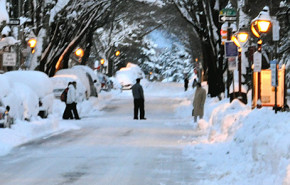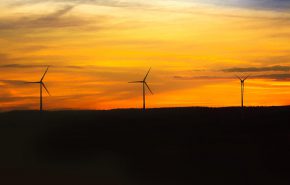The polar vortex has brought intense sub-zero temperatures to the midwestern United States—and we don’t yet know what the full effects of this weather event will be. The last polar vortex event in the U.S. took place in early January 2014, bringing record low temperatures that lasted well into March of that year. The coldest U.S. temperature attributed to the 2014 polar vortex was -37 °F, which was recorded in Babbitt, Minnesota on January 4.
The 2014 polar vortex had noticeable effects on a range of energy providers. Below is a collection of observations gathered in the months following the 2014 vortex’s onset in January of that year—these observations were published on the GAI website in March 2014.
We plan to compile a similar collection of effects when correlating data for the current polar vortex is available—we expect that side-by-side comparison of the effects of the two events will offer some interesting revelations.
How Does the Polar Vortex Affect Energy Providers? Eight Things You Need to Know
Originally published in March 2014
![]()
The nation is finally emerging from subzero temperatures, heavy snowfall, and below-zero wind chills, In much of the country, the weight of ice-coated tree limbs broke power lines, resulting in power outages for customers. A broken pipeline in Canada triggered some utility companies to request that customers turn down their heat, lest run out of natural gas altogether. Propane prices spiked due to shortages. Fuel coagulated in semi-trucks, forcing them to pull over on highways and wait out the weather. But while this was a harsh winter for much of the nation, it surprisingly was not a record-setting winter overall in terms of temperatures and snow accumulation. Below are eight things you perhaps didn’t know about the polar vortex of 2014…
- When the average temperature in the U.S. dropped below 18 ˚F on Jan. 6, it was the first time the country had been that cold, on average, in 17 years.
- Each time the temperature dropped one degree below 20 ˚F, another 400 MW of electricity was needed. So when the temperature drops to 0, we need an additional 8,000 MW across the US, the equivalent of approximately 20 gas-fired stations. Demand went up, the supply was weakened, and natural gas prices skyrocketed.
The polar vortex has different effects on different energy providers…
- A significant number of fossil fuel generation systems suffered outages as the polar vortex affected half of the U.S. Coal stacks were frozen or diesel generators simply could not function in such low temperatures.
- A majority of electric utility consumers are cushioned from short-term price fluctuations by fixed contracts, so the brunt of the demand surge is felt by utility providers as gas prices shoot up.
- Nuclear energy was able to keep up with demand during the extreme cold and became the primary provider of electricity in New England, edging out gas 29% to 27%.
- Nuclear did not suffer from the frozen mechanical issues seen in the fossil fuel industry. Most individual nuclear plants actually produced more energy throughout the polar vortex period because of the cold weather. The energy output of any thermal (steam) power plant depends on the temperature difference between the steam and the outside/condenser temperature.
- Wind energy helped to offset the increased demand during the severe cold. In Nebraska, natural gas prices were up more than 300%, so utility companies brought wind onto the grid to provide 13% of demand and keep electricity prices down. Even as far south as Texas, the polar vortex still dropped temperatures significantly enough to increase energy demand and thwart demand predictions, setting a record peak of 57 GW. Bringing wind onto the grid kept prices more stable.
- This most recent extreme cold weather illustrated the importance of a diverse energy market. Research and development to increase the efficiency and flexibility of all energy sources is critical to a better understanding of meeting future severe weather needs.
Stay tuned for more information on how energy businesses are affected by the weather and other trends.
GAI hopes that all are weathering the current polar vortex safely, and we look forward to continuing this discussion when more information becomes available.


